Dongguan Jialisheng Refrigeration Equipment Co., Ltd. |
|
Verified Suppliers
|
|
JLSFD-4HP Air-Cooled Low Temperature Chiller Ethylene Glycol Chiller, Chiller, Freezer
Production Description:
Glycol chillers are a common type of chiller that use ethylene glycol as the cooling medium. The following is a description of the glycol chiller:
1. Working principle: The ethylene glycol chiller adopts the principle of condensation cycle. Ethylene glycol acts as a cooling medium in the circulation system, and the ethylene glycol is sent to the cooling equipment through the circulation pump, and returns to the chiller for condensation after absorbing heat, and then circulates again.
2. Cooling medium: Ethylene glycol is a commonly used cooling medium with good thermal conductivity and antifreeze performance. It has a low freezing point and boiling point, which can provide stable cooling effect at low temperature.
3. Temperature control range: Glycol chillers are usually able to provide lower cooling temperatures, generally ranging from -5°C to -40°C, or even lower. This makes it useful in applications requiring cryogenic cooling.
4. Application fields: Ethylene glycol chillers are widely used in various scenarios that require low-temperature cooling or constant temperature control. It is commonly used in industries such as laboratories, scientific research, medical treatment, pharmaceuticals, chemicals, food processing and electronics.
5. Corrosion resistance: Ethylene glycol has good corrosion resistance and is compatible with various materials, such as stainless steel, copper, aluminum, etc. This gives the glycol chiller high durability when in contact with cooling equipment and piping.
6. Environmental friendliness: Ethylene glycol is considered to be a relatively environmentally friendly choice compared to some other cooling media. It is less volatile and less toxic, and has less impact on the environment.
It should be noted that the glycol chiller needs to follow relevant safety operating procedures during use and maintenance to ensure its safe and reliable operation. In addition, the selection of a glycol chiller should be determined based on the specific application needs to ensure that it can meet the required cooling temperature and performance requirements.

Production Features:
Glycol chillers have some advantages and disadvantages over other cooling media. The following is a comparison description:
Advantage:
1. Low temperature range: Glycol chillers can provide lower cooling temperatures, generally ranging from -20°C to -40°C, or even lower. This makes it useful in applications requiring cryogenic cooling.
2. Freeze resistance: Ethylene glycol has good antifreeze performance, and its freezing point is low, which can prevent the cooling system from freezing and damage in low temperature environment. This makes glycol chillers suitable for applications in cold climates or low temperature environments.
3. Thermal conductivity: Ethylene glycol has good thermal conductivity, can effectively absorb and transfer heat, and provide a stable cooling effect. This makes glycol chillers excellent in heat control and temperature stability.
4. Corrosion resistance: Ethylene glycol has good corrosion resistance to many materials and is compatible with common materials such as stainless steel, copper, and aluminum. This reduces corrosion problems in contact with cooling equipment and piping, increasing system durability.
Disadvantages:
1. Higher viscosity: Ethylene glycol has a higher viscosity, and its fluidity may be slightly worse than other cooling media. This may require more powerful pumps and piping to ensure good cooling flow.
2. Relatively low heat dissipation capacity: Compared with some other cooling media, ethylene glycol has slightly lower thermal conductivity. This may require a larger heat exchanger area or longer cooling time to achieve the same cooling effect.
3. Higher cost: Compared with some other cooling media, the cost of ethylene glycol is higher. This needs to consider economic factors when choosing, and weigh the relationship between its performance and cost.
Overall, glycol chillers offer significant advantages in cryogenic cooling applications, but selection requires a combination of application-specific needs, performance requirements, and economics.
Working Principle:
Specifically, the working principle of the air-cooled low-temperature chiller is:
1.The compressor sucks in low-temperature and low-pressure refrigerant and compresses it into a high-temperature and high-pressure gas.
2.The high-temperature and high-pressure gas enters the condenser, releases heat into the air through the radiator, and turns into a high-temperature and high-pressure liquid.
3.The high-temperature and high-pressure liquid enters the evaporator, exchanges heat with the outside through the evaporator, and turns into low-temperature and low-pressure steam.
4.The low-temperature and low-pressure steam enters the compressor again, and the cycle repeats.

Techinical Parameters:
| Model | JLSF-3HP | JLSF-5HP | JLSF-10HP | JLSF-20HP | JLSF-30HP | JLSF-40HP | JLSF-50HP | JLSF-60HP | ||
| Cooling capacity | KW/h | 9.3 | 15.5 | 31 | 77.5 | 93 | 124 | 155 | 186 | |
| Kcal/h | 8,100 | 13,500 | 27,000 | 61,683 | 74,992 | 97,675 | 116,521 | 156,249 | ||
| Temperature range | -30℃~35℃ | |||||||||
| Power supply | 1N-220V 50HZ/60HZ 3N-380V/415V 50HZ/60HZ | |||||||||
| Total power | KW | 6.2 | 10.3 | 19.8 | 22.75 | 28.3 | 39.2 | 46.75 | 56.1 | |
| Compressor | Type | Hermetic scroll type or piston | ||||||||
| Power | KW | 2.25 | 3.75 | 7.5 | 15 | 22.5 | 30 | 37.5 | 45 | |
| Circulating pump | Power | KW | 1.5 | 1.5 | 2.2 | 2.2 | 4 | 4 | 4 | 5.5 |
| Head | m | 21.5 | 21.5 | 22 | 22 | 25 | 25 | 25 | 26 | |
| Refrigerant | Type | R22/R407c/R404a/R410a | ||||||||
| Control method | Temperature Sensing External Pressure Equalizing Expansion Valve | |||||||||
| filling volume | Kg | 7.2 | 9.1 | 12.2 | 15.3 | 18.6 | 24.5 | 30.6 | 36.8 | |
| Evaporator | Flow | m³/h | 5.81 | 7.6 | 10.16 | 12.34 | 15.2 | 19.53 | 23.3 | 30.52 |
| water capacity | m³/h | 0.18 | 0.21 | 0.28 | 0.32 | 0.32 | 0.61 | 0.66 | 0.72 | |
| Diameter | inch | 1.5" | 2" | 2.5" | 3" | |||||
| Condensator | Type | Efficient brass sets corrugated aluminum fin | ||||||||
| Fan | Type | Axial flow | ||||||||
| air volume | m³/h | 12000 | 15000 | 20000 | 25000 | 30000 | 40000 | 50000 | 60000 | |
| Protective device | High and low pressure switch, antifreeze protection, fusible plug/safety valve, overload protection device, coil overheat protector, automatic temperature protection switch, etc. | |||||||||
| Machine size | L | mm | 1400 | 1750 | 2000 | 2000 | 2200 | 2000 | 2000 | 2400 |
| W | mm | 725 | 750 | 900 | 900 | 900 | 1800 | 1800 | 1800 | |
| H | mm | 1450 | 1500 | 1770 | 1770 | 1770 | 2200 | 2300 | 2300 | |
| Unit weight | Kg | 370 | 480 | 590 | 590 | 880 | 1000 | 1280 | 1420 | |
Application Industry:
Low-temperature chillers are widely used in various scenarios that require low-temperature cooling or constant temperature control. The following are some common low temperature chiller usage scenarios:
1. Laboratory and scientific research: low-temperature chillers are used in laboratories and scientific research fields to provide a low-temperature environment for controlling laboratory equipment, cooling experimental samples, condensation reactors, etc.
2. Chemical industry: Low-temperature chillers are often used in the processes of condensation, crystallization, cooling and dissolution in the chemical industry to control the reaction temperature and improve the selectivity and yield of chemical reactions.
3. Pharmaceutical industry: In the pharmaceutical industry, low-temperature chillers are used in the freeze-drying process, cooling reactors, cooling drug storage areas, etc., to ensure the quality and stability of drugs.
4. Food and beverage processing: low-temperature chillers are used in food and beverage processing for freezing, cooling and fresh-keeping applications, such as frozen food processing, wine fermentation process control, etc.
5. Medical equipment: Low-temperature chillers are widely used in medical equipment, such as magnetic resonance imaging (MRI), ultrasonic equipment, laser equipment, etc., to maintain the stability and performance of the equipment.
6. Electronics and semiconductor manufacturing: In the process of electronics and semiconductor manufacturing, low-temperature chillers are used to cool lasers, semiconductor process equipment, electronic component testing, etc., to control temperature and improve product quality.
7. Freezing storage: Low-temperature chillers are often used in frozen storage places, such as freezers, refrigerated trucks, etc., to keep food, medicines and other perishable items at a low temperature.
8. Freezing and cooling equipment testing: In some industries and research and development fields, low-temperature chillers are used to test and evaluate the performance and reliability of electronic equipment, aerospace devices, auto parts, etc. in extremely low temperature environments.
9. Chemical reaction control: Some chemical reactions need to be carried out at low temperature, and the low-temperature chiller provides the required cooling capacity to control the reaction rate, selectivity and output.
10. Electroplating and electronic assembly: In the process of electroplating and electronic assembly, low-temperature chillers are used to cool and control the temperature of electroplating liquid, welding equipment and electronic components to improve product quality and stability.
11. Medical freezing: Low temperature chillers are used in the medical field to freeze and preserve biological samples, blood products, cells, vaccines and medicines.
12. Solar simulation testing: In the solar industry, cryogenic chillers are used to simulate the performance and reliability of solar panels at extreme low temperatures.
13. Material testing and research: Low-temperature chillers are used in the field of material science to test the mechanical properties, thermal properties and electrical properties of materials, especially the performance at low temperatures.
14. Vacuum condensation: In the process of vacuum condensation, low temperature chillers provide a low temperature environment to condense and recover gas or vapor.
15. Plastic processing: In the processing of plastic injection molding, extrusion and blow molding, low-temperature chillers are used to cool molds, control the solidification speed of plastics and improve product quality.
16. Environmental simulation: Low temperature chillers can be used to simulate extreme low temperature environments to evaluate the performance, reliability and durability of equipment, materials and products under low temperature conditions.
These are some examples of cryogenic chillers in more application fields, but in fact, the applications of cryogenic chillers are wide and diverse, and can be customized and adapted according to specific industries and needs. Whether it is scientific research, industrial production or laboratory applications, cryogenic chillers play an important role in providing reliable low temperature environments and temperature control.
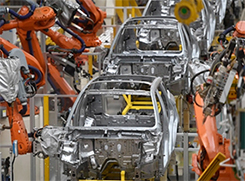
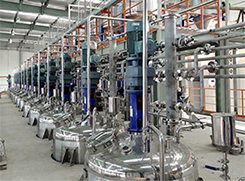
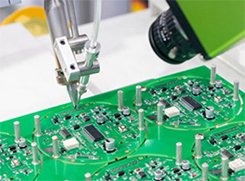

Automotive Manufacturing
Chemical Engineering
Electronics Industry
Electroplating Industry
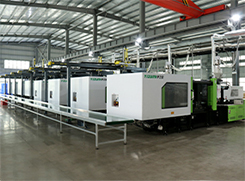
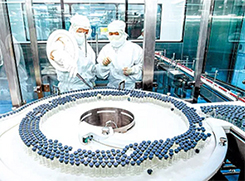
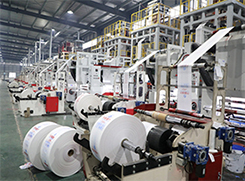
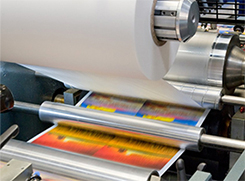
Injection Molding Industry Pharmaceutical Industry Plastic Packaging Industry Printing Industry
Upport and Services:
Air Cooled Chiller technical support and service includes:
1. 24/7 customer support
2. Remote guidance installation and maintenance
3. Remote Diagnostics and Troubleshooting
4. Phone/Email Advice and Guidance
5. User friendly documentation and manuals
6. Software Updates and Upgrades
7. Cost price of spare parts and consumables
Packing and Shipping:
Air-cooled chillers are packaged and shipped in standard plywood wooden boxes. All components are secured and protected with a film, and the unit is then placed on a pallet for easy transport. And affix the shipping mark information label on the wooden box to ensure correct delivery.
Compared with other cooling media, which application scenarios are more suitable for glycol chillers?
Glycol chillers are generally more suitable for use in the following application scenarios:
1. Low temperature requirements: Glycol chillers can provide lower cooling temperatures, generally ranging from -5°C to -40°C, or even lower. Therefore, when a lower cooling temperature is required, such as low-temperature experiments and cooling requirements in laboratories, scientific research, medical, pharmaceutical and chemical industries, glycol chillers are an ideal choice.
2. Requirements for antifreeze: Ethylene glycol has good antifreeze performance, which can prevent the cooling system from freezing and being damaged in low temperature environments. Therefore, in cold climate environments or applications that need to work under low temperature conditions, such as frozen food processing, refrigerated storage and cryogenic laboratories, glycol chillers are a more suitable choice.
3. Temperature stability requirements: Ethylene glycol has good thermal conductivity and temperature stability, and can provide a stable cooling effect. Therefore, in applications that require precise temperature control, such as medical refrigeration, chemical reaction control, electronic equipment cooling, and solar simulation testing, glycol chillers are a more suitable choice.
4. Corrosion requirements: Ethylene glycol has good corrosion resistance to many materials and is compatible with common materials such as stainless steel, copper, and aluminum. Therefore, in applications that require contact with cooling equipment and piping, glycol chillers can reduce corrosion problems and increase system durability. This applies to many industries such as chemical, pharmaceutical and food processing.
It is necessary to select the appropriate cooling medium according to the specific application requirements and performance requirements, comprehensively consider the advantages and disadvantages of the glycol chiller, and compare with other cooling media to determine the most suitable choice.